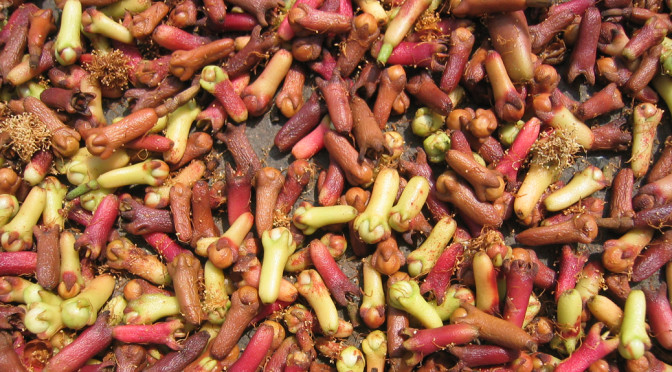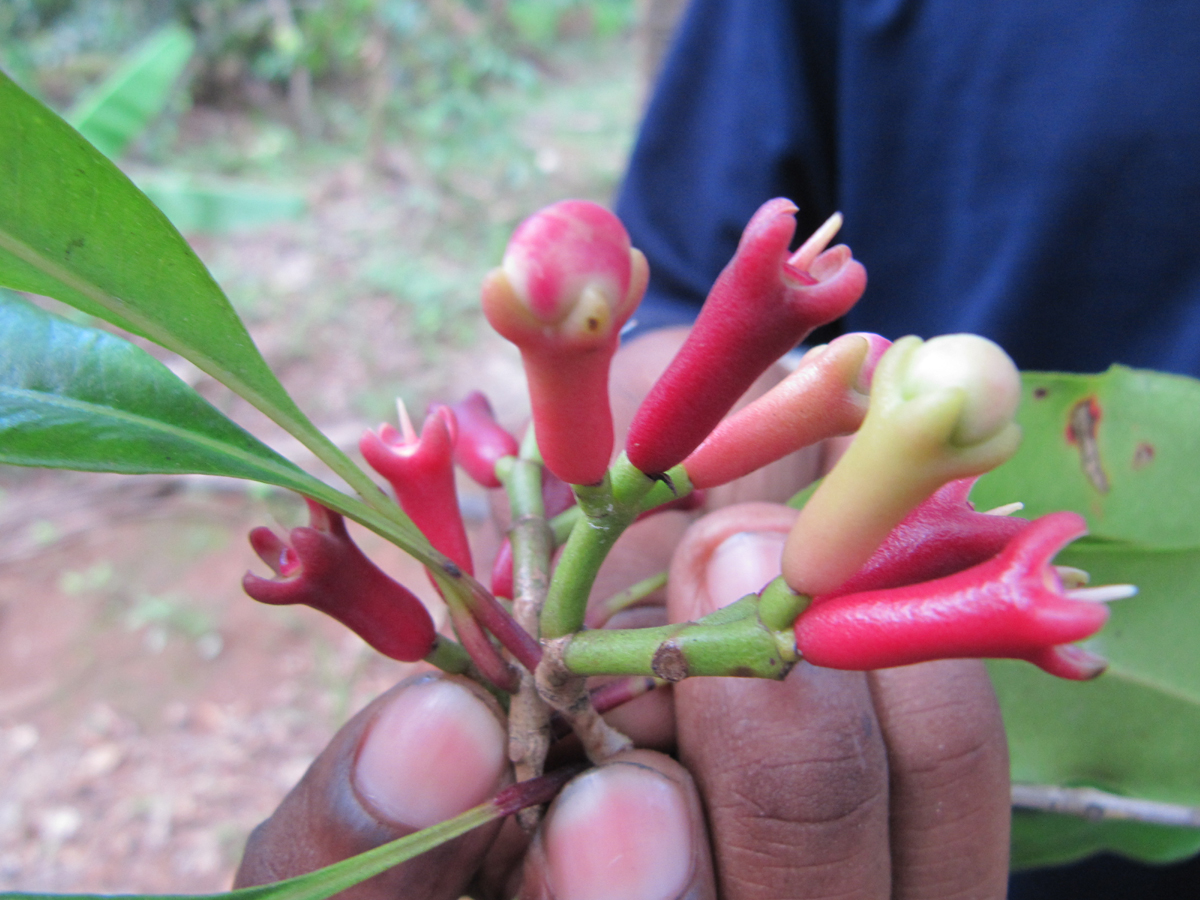Until modern times, cloves grew only on a few islands in the Maluku Islands (historically called the Spice Islands)
In the seventeenth century 1)↓ as now, many families in northern Maluku would spend harvest season knocking clusters of pink buds off their clove trees. Children spread the buds on flat, round trays woven out of palm leaves, and adults hiked them up onto the nipa-palm roof of the cottage to dry. After a few days being toasted by the sun and caressed by the breeze, the buds shrivel and blacken into the round-topped nails that we toss into mulled wine. If you are sailing downwind from one of the smaller islands of Maluku in the July clove-drying season, you can sometimes smell Christmas before you can even see land. […]
The biggest consumer of Indonesia’s cloves 2)↓ nowadays are Indonesia’s smokers, who like their cigarettes scented with the spice, not least because it doubles as an anaesthetic and smoothes the passage of toxins into the lungs. The country smokes 223 billion clove cigarettes, or kreteks, every year, thirteen times more than ordinary ‘white’ cigarettes…
Elizabeth Pisani, Indonesia Etc.
Cloves are the aromatic flower buds of a tree in the family Myrtaceae, Syzygium aromaticum. They are native to the Maluku Islands in Indonesia, and are commonly used as a spice. Cloves are commercially harvested primarily in Indonesia, India, Madagascar, Zanzibar, Pakistan, Sri Lanka and Tanzania.
Archeologists have found cloves in a ceramic vessel in Syria, with evidence that dates the find to within a few years of 1721 BC. In the third century BC, a Chinese leader in the Han Dynasty required those who addressed him to chew cloves to freshen their breath. Cloves were traded by Muslim sailors and merchants during the Middle Ages in the profitable Indian Ocean trade, the clove trade is also mentioned by Ibn Battuta and even famous Arabian Nights characters such Sinbad the Sailor are known to have bought and sold cloves from India.
Until modern times, cloves grew only on a few islands in the Maluku Islands (historically called the Spice Islands), including Bacan, Makian, Moti, Ternate, and Tidore. In fact, the clove tree that experts believe is the oldest in the world, named Afo, is on Ternate. The tree is between 350 and 400 years old. Tourists are told that seedlings from this very tree were stolen by a Frenchman named Poivre in 1770, transferred to France, and then later to Zanzibar, which was once the world’s largest producer of cloves.
Until cloves were grown outside of the Maluku Islands, they were traded like oil, with an enforced limit on exportation. As the Dutch East India Company consolidated its control of the spice trade in the 17th century, they sought to gain a monopoly in cloves as they had in nutmeg. However, „unlike nutmeg and mace, which were limited to the minute Bandas, clove trees grew all over the Moluccas, and the trade in cloves was way beyond the limited policing powers of the corporation.”
en.wikipedia
| 1. | ↑ | when the Dutch East India Company consolidated its control of the spice trade – przyp. Amin |
| 2. | ↑ | Indonesia produces nearly 80 per cent of the world’s cloves |

